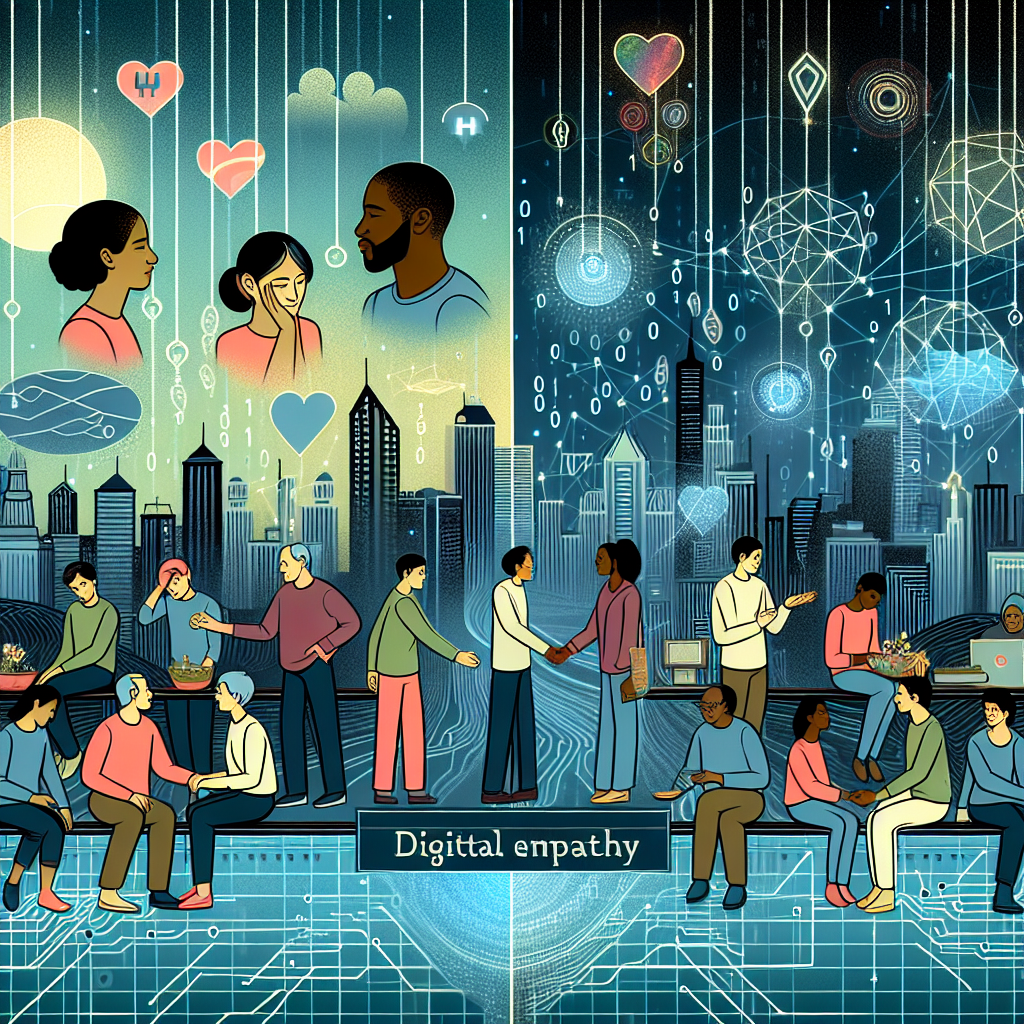
Introduction
In an era where technology connects us more than ever, a paradox emerges: as our screens become gateways to the world, they risk becoming barriers to genuine human connection. This is where the concept of Digital Empathy: Navigating Human Connection in the Age of Technology comes into play. It represents the need to cultivate human understanding and emotional intelligence within digital interactions, ensuring that as we engage online, we do so with compassion, awareness, and authenticity.
The Relevance of Digital Empathy
Effective communication is at the heart of every meaningful relationship, whether personal or professional. However, the rise of technology has transformed how we interact. A 2020 study revealed that nearly 60% of communication occurs through digital channels, raising questions about the depth of our connections. Digital empathy is essential to bridging the gap between virtual interactions and authentic human experiences.
The Landscape of Digital Communication
Changes in Communication Methods
The way we communicate has evolved significantly. Text messages, social media platforms, and video calls have replaced face-to-face interactions, leading to an increased reliance on tech-driven engagement. Here’s a simple overview of the most common communication platforms and their usage statistics:
| Platform | Audience Reach (%) | Common Use |
|---|---|---|
| 60% | Personal sharing, news feed | |
| 40% | Visual engagement, storytelling | |
| 30% | Real-time updates, news sharing | |
| Zoom | 25% | Virtual meetings, events |
| 70% | Instant messaging |
Case Study: The Rise of Remote Work
The COVID-19 pandemic accelerated the shift to remote work, forcing employers and employees to adapt quickly to new communication styles. Companies like Slack and Microsoft Teams saw a massive increase in users, highlighting the demand for effective digital communication tools. Organizations that prioritized digital empathy in their communication strategies noticed better engagement and morale among remote employees.
The Psychology of Online Interaction
Understanding how people react when they communicate through digital channels helps us appreciate the need for digital empathy. Research indicates that non-verbal cues, such as body language and facial expressions, are often lost in digital interactions. This absence can lead to misunderstandings and conflict.
Key Findings:
- Messages can be easily misinterpreted due to the lack of tonality and context.
- Emotional responses might be dulled when expressed on a screen, leading to detached interactions.
Incorporation of Digital Empathy: By recognizing these gaps, we can implement strategies to enhance our digital communication, fostering more meaningful connections.
Cultivating Digital Empathy
Digital empathy can be cultivated through specific practices and a mindful approach to online interactions. Here are meaningful strategies to enhance your digital communication skills:
1. Active Listening
Definition: Engaging fully with the speaker’s message, both verbally and non-verbally.
Application: In digital conversations, this might involve acknowledging points made by others, asking follow-up questions, and validating their feelings. Simple phrases like, “I understand how you feel” or “That sounds challenging” can enhance emotional connectivity.
2. Mindful Communication
Practices Include:
- Taking a moment to reflect before responding.
- Avoiding multitasking during conversations.
- Using emojis and gifs appropriately to convey emotions.
Impact: Mindfulness fosters deeper connections, as it shows the sender that you value their input and feelings.
3. Personalization in Messaging
Adjusting your communication style to suit your audience can boost engagement. For instance, using someone’s name in a message or recalling previous conversations can create a sense of intimacy and understanding.
Case Study: Personalized Customer Support
Companies that implement personalized customer service strategies, like Zappos, often receive higher customer satisfaction ratings. Their agents are trained to be empathetic, treating customers as individuals rather than numbers, which enhances the overall customer experience.
Real-World Applications of Digital Empathy
In Business
Businesses that incorporate digital empathy into their culture reap substantial rewards. According to a McKinsey report, organizations with empathetic leaders saw 30% higher employee engagement.
In Education
Educators can harness digital empathy through engaging teaching methods that include interactive tools, online discussions, and personalized feedback. This approach not only enhances learning but also fosters a supportive environment.
In Social Media
Understanding the impact of digital interactions on mental health is crucial. Platforms like Instagram have begun integrating features aimed at promoting positive community engagement—such as hiding ‘like’ counts—to reduce anxiety and foster healthy interactions.
Enhancing Relationships
Digital empathy doesn’t only apply to professional settings; it’s vital for personal relationships too. Regular check-ins with friends and family over video calls, sharing meaningful content, and expressing genuine concern are all ways to build stronger ties, even over long distances.
Challenges and Considerations
Overcoming Digital Disconnection
Despite the tools available, digital is not always emotional. Here are common challenges faced in digital empathy:
- Emotional Detachment: When interactions are purely transactional, meaning is often lost.
- Information Overload: The constant influx of notifications and messages can lead to burnouts.
- Misinformation: The digital world can amplify errors, making it crucial to validate information.
Solutions:
- Encourage empathy training workshops for teams.
- Promote a culture that values mental wellness.
- Implement tools that cut through the noise, allowing for focused communication.
Conclusion
The concept of Digital Empathy: Navigating Human Connection in the Age of Technology is not just a trend but a critical framework for fostering genuine relationships in our increasingly digital world. By actively listening, practicing mindfulness, personalizing communication, and applying digital empathy principles in various settings, we can cultivate deeper connections.
Call to Action
As you navigate your online interactions, consider how you can incorporate these practices into your daily routine. Small changes can lead to significant impacts, enhancing not only your connections but also your overall digital experience.
FAQs
1. What is digital empathy?
Digital empathy is the ability to understand and share the feelings and emotions of others in digital communications, ensuring that interactions remain compassionate and aware.
2. How can I practice digital empathy?
You can practice digital empathy by actively listening, personalizing your messages, and being mindful of your words and emotions during online interactions.
3. Why is digital empathy important in the workplace?
Digital empathy fosters better communication and understanding among employees, ultimately leading to higher engagement, satisfaction, and productivity.
4. How can digital empathy improve personal relationships?
By applying principles of empathy, you can enhance understanding and intimacy in relationships, leading to deeper connections and reduced misunderstandings.
5. What tools can help cultivate digital empathy?
Several tools can foster digital empathy, including collaboration platforms (like Slack), personalized messaging services (like WhatsApp), and feedback tools that encourage openness and dialogue.
In a world where technology continues to shape how we interact, Digital Empathy: Navigating Human Connection in the Age of Technology offers not just a way to engage but a pathway toward understanding and compassion. Embrace this journey of empathy—your digital relationships, and indeed your life, will be richer for it.















